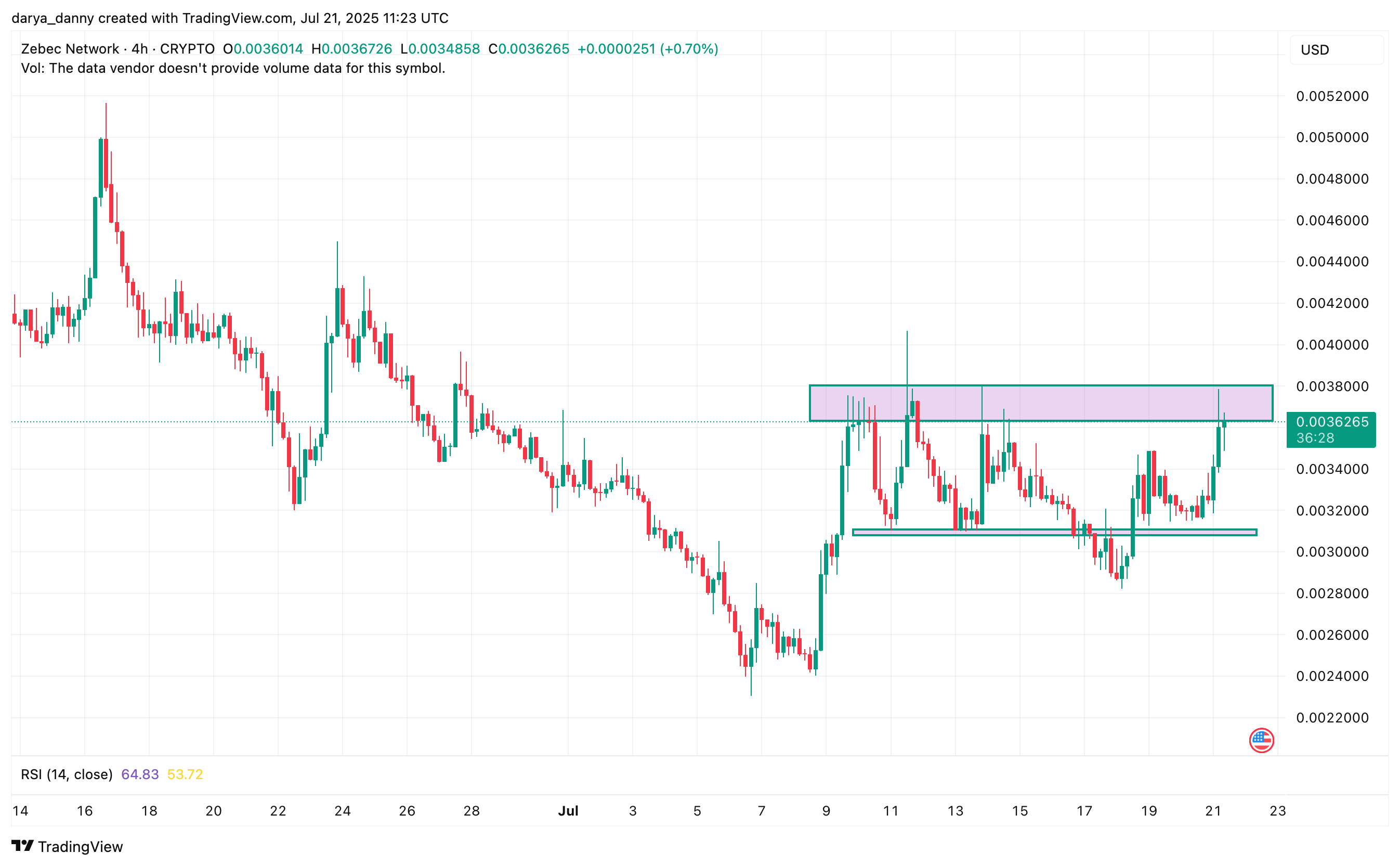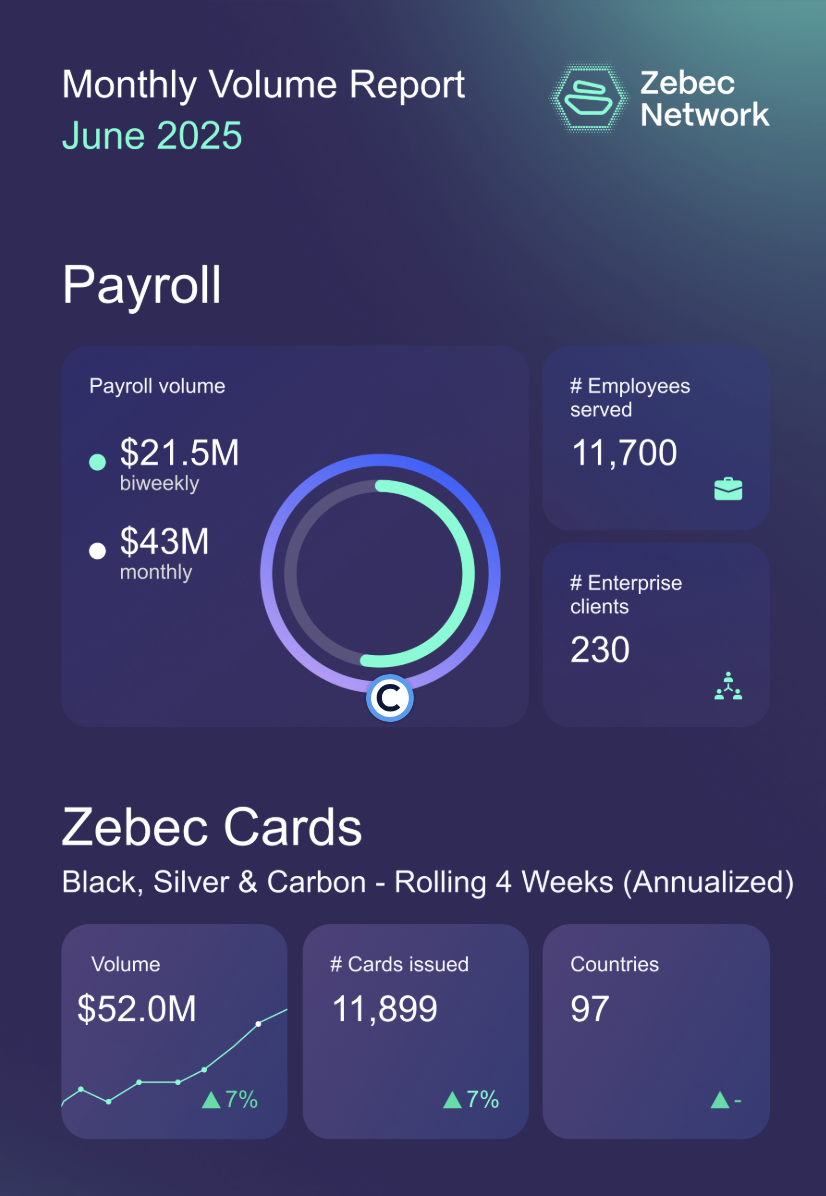ZBCN price rockets 15% as Zebec Network ecosystem posts strong June performance
Zebec Network’s price jumps 15%, buoyed by ecosystem growth and influx of new payroll clients.
Zebec Network (ZBCN) price is up 15% in the past 24 hours, rising alongside a broader rally in the altcoin market.
After consolidating within a narrow range between $0.00310 and $0.00380, ZBCN price briefly dipped below support late last week. However, the swift rebound suggests the move was likely a false breakdown, shaking out weaker hands before the current surge.

With today’s 15% move, ZBCN price is now testing the key resistance zone between $0.0036 and $0.0038, a level that has repeatedly rejected upward momentum over the past two weeks. A breakout above this area could signal a shift in market structure and open the door to further upside, potentially targeting the $0.0040 psychological level. This would mark 12% gain from the current price of $0.0036.
On the downside, immediate support sits at $0.0035, a level that previously acted as resistance and has now flipped to support. Below this, the lower boundary of the trading range at $0.00310 provides a secondary and strong support zone, which could help contain pullbacks.
ZBCN price rally appears to be bolstered by strong fundamentals across the Zebec Network’s ecosystem. As highlighted in its June 2025 volume report, Zebec Network’s payroll volume surged to $43 million monthly.
On the consumer side, Zebec Cards, including Black, Silver, and Carbon tiers, saw $52 million in rolling 4-week volume, a 7% increase, with nearly 11,900 cards now issued across 97 countries. According to Zebec team, this growth follows the successful onboarding of users from ScienceCardUK into the Zebec Cards ecosystem, along with new payroll client acquisitions in the U.S., adding to the platform’s momentum.

Additionally, Zebec’s leadership recently spoke at the UK House of Lords on July 10, engaging with policymakers and regulators, an institutional milestone that likely further boosted market sentiment.
You May Also Like

Japan’s Iron Lady Sanae Takaichi May Reshape Crypto Policy

Bitcoin mining company Cango mined about 616 bitcoins in September, bringing its total holdings to 5,810.
